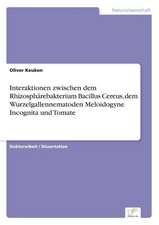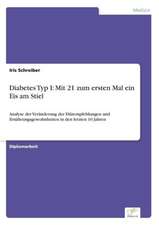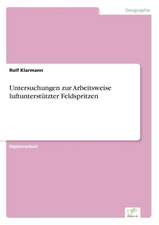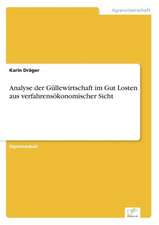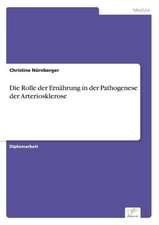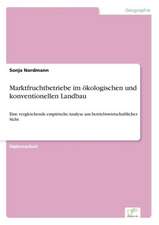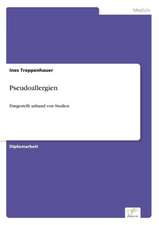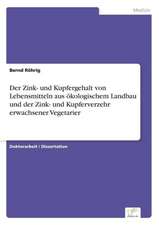Wild Mushrooms and Health: Diversity, Phytochemistry, Medicinal Benefits, and Cultivation: Exploring Medicinal Plants
Editat de Kamal Ch. Semwal, Steven L. Stephenson, Azamal Husenen Limba Engleză Hardback – sep 2023
FEATURES
- Comprehensive review of medicinal mushrooms as sources of promising bioactive molecules and prospective compounds for drug discovery
- Information on diversity, distribution, ethnomycology, ecology, cultivation, descriptions of specific species, and folk medicinal uses of mushrooms throughout the world
- Emphasis on identification, documentation, bioactive substances, and the nature of mushroom bioactivity
- Discussion of the nutraceutical properties of wild mushrooms, including high protein content comparable to that of meat, and low fat content, which make them a complete dietary food source
- Exploration of methods used in the collection, identification, documentation, cultivation, analysis, and conservation of mushrooms for drug discovery
Din seria Exploring Medicinal Plants
-
 Preț: 363.66 lei
Preț: 363.66 lei -
 Preț: 368.15 lei
Preț: 368.15 lei -
 Preț: 364.56 lei
Preț: 364.56 lei -
 Preț: 345.40 lei
Preț: 345.40 lei - 9%
 Preț: 1075.06 lei
Preț: 1075.06 lei -
 Preț: 358.23 lei
Preț: 358.23 lei - 5%
 Preț: 1194.07 lei
Preț: 1194.07 lei -
 Preț: 433.21 lei
Preț: 433.21 lei - 18%
 Preț: 1123.41 lei
Preț: 1123.41 lei - 18%
 Preț: 1122.29 lei
Preț: 1122.29 lei - 15%
 Preț: 431.75 lei
Preț: 431.75 lei - 18%
 Preț: 1128.94 lei
Preț: 1128.94 lei -
 Preț: 421.66 lei
Preț: 421.66 lei - 18%
 Preț: 1131.93 lei
Preț: 1131.93 lei - 18%
 Preț: 868.11 lei
Preț: 868.11 lei - 18%
 Preț: 1285.36 lei
Preț: 1285.36 lei -
 Preț: 453.67 lei
Preț: 453.67 lei - 18%
 Preț: 1283.44 lei
Preț: 1283.44 lei - 18%
 Preț: 1015.89 lei
Preț: 1015.89 lei - 18%
 Preț: 838.64 lei
Preț: 838.64 lei - 18%
 Preț: 1114.70 lei
Preț: 1114.70 lei - 28%
 Preț: 656.02 lei
Preț: 656.02 lei - 18%
 Preț: 1230.89 lei
Preț: 1230.89 lei - 18%
 Preț: 1229.77 lei
Preț: 1229.77 lei - 18%
 Preț: 1176.92 lei
Preț: 1176.92 lei - 18%
 Preț: 792.08 lei
Preț: 792.08 lei - 18%
 Preț: 1128.28 lei
Preț: 1128.28 lei - 18%
 Preț: 851.13 lei
Preț: 851.13 lei - 18%
 Preț: 1114.40 lei
Preț: 1114.40 lei - 29%
 Preț: 976.68 lei
Preț: 976.68 lei
Preț: 1118.96 lei
Preț vechi: 1364.59 lei
-18% Nou
Puncte Express: 1678
Preț estimativ în valută:
214.18€ • 232.73$ • 180.03£
214.18€ • 232.73$ • 180.03£
Carte tipărită la comandă
Livrare economică 21 aprilie-05 mai
Preluare comenzi: 021 569.72.76
Specificații
ISBN-13: 9781032372198
ISBN-10: 1032372192
Pagini: 312
Ilustrații: 10 Tables, black and white; 11 Line drawings, black and white; 62 Halftones, black and white; 73 Illustrations, black and white
Dimensiuni: 178 x 254 x 19 mm
Greutate: 0.73 kg
Ediția:1
Editura: CRC Press
Colecția CRC Press
Seria Exploring Medicinal Plants
ISBN-10: 1032372192
Pagini: 312
Ilustrații: 10 Tables, black and white; 11 Line drawings, black and white; 62 Halftones, black and white; 73 Illustrations, black and white
Dimensiuni: 178 x 254 x 19 mm
Greutate: 0.73 kg
Ediția:1
Editura: CRC Press
Colecția CRC Press
Seria Exploring Medicinal Plants
Public țintă
Adult education, General, and PostgraduateCuprins
Biodiversity of Medicinal Mushrooms of India and Preliminary Screening for Bioactive Molecules. Distribution, Ecology and Taxonomy of Medicinal Mushrooms. Bioactive Profile of Xylaria of Southwest India. Ethnomycology, Bioprospection and Uses of Mushrooms in Costa Rica. Medicinal Mushrooms of Kerala State, India: Diversity and Systematics, India. Growing Your Own Effective Medicines - Cultivation of Medicinal Mushrooms and Fungi. Amanita: Toxicity, Edibility, Diversity, and Phytochemistry. Ethnomycology: Diversity and Utilization of Medicinal Mushrooms in the Philippines. Medicinal Mushrooms – Citizens’ Perspective in Himalaya. Diversity of Macrofungi in North East India with Special Reference to Medicinal Macrofungi. Wild Medicinal Mushrooms of Northwest Himalayas of Jammu & Kashmir, and Ladakh: Their Traditional and Modern Applications. Taxonomy, Diversity, Ecology, Ethnomycology, Medicinal Aspects, Biotechnology, and Phytochemistry of Sri Lankan Mushrooms. Taxonomy, Distribution, and Ethnomycological Knowledge of Calostoma Spp. (Calostomataceae) from Northern Borneo, Malaysia. Diversity, Distribution and Ecology of Wild/Medicinal Mushrooms in Bangladesh. Current Apprises on Medicinal Properties of Some Wild Mushrooms. Diversity and Ecology of Wild Mushrooms in Ethiopia. Mushroom- Biotechnology: Recent Trends and Applications. Use of Mushrooms in Traditional Medicine in China. Taxonomy, Diversity, Mycochemical and Medicinal Aspects of Wood Decay Fungi from Andhra Pradesh's Eastern Ghats Region of India. Hidden Treasure of Himalayan Forests: Mushrooms with Curative Potential. Some Uncommon Traditionally Important Mushrooms of Uttarakhand, India.
Notă biografică
Kamal Ch. Semwal is an Associate Professor in the Department of Biology of the College of Sciences at Eritrea Institute of Technology in Asmara, where he teaches interdisciplinary subjects in the botanical sciences. He received his Ph.D. from HNB Garhwal University (a Central University), BGR Campus Pauri, Srinagar Garhwal, Uttarakhand, India, in 2004. He began his carrier as a Research Associate at the Directorate of Mushrooms in Solan (Himachal Pradesh) and later taught at Gondar University and Mekelle University in Ethiopia (East Africa). His research on mushrooms is well-recognized and has been cited numerous times in various research journals. He is the author or coauthor of several dozen papers in peer-reviewed journals along with book chapters, and review articles. He also served as a co-editor of a book entitled “Ecosystem and Environmental Pollution, published by Discovery Publishing House (P) Ltd, India, and co-investigator of a research project “Collection, identification, documentation of wild edible and medicinal mushrooms of Garhwal Himalaya of Uttarakhand” funded by UCOST, Dehradun, India. His papers have considered a number of disciplines of botany, particularly the diversity, taxonomy, and ecology of wild mushrooms in the Northwestern Himalayas of India. He has more than 18 years of experience in fungal taxonomy and ecology. He has described several species of wild mushrooms new to science and is currently serving as a reviewer for many highly respected international scientific journals throughout the world.
Steven L. Stephenson is currently a Research Professor in the Department of Biological Sciences at the University of Arkansas, where he teaches courses in plant biology, forest ecology, and plant ecology. He received his Ph.D. from Virginia Polytechnic Institute and State University (Virginia Tech) in 1977 and taught at Fairmont State College (now University) for 27 years before moving to the University of Arkansas in 2003. He was a Senior Fulbright Scholar at Himachal Pradesh University in 1987, a Visting Scientist at the Australian Antarctic Division in 1995, and the William Evens Fellow at the University of Otago in New Zealand in 2003. His studies of myxomycetes (slime molds) and fungi have taken him to all seven continents and every major type of terrestrial ecosystem. He is a Fellow of the Mycological Society of America and the author or coauthor of 18 books and more than 480 book chapters and papers in peer-reviewed journals. His more important books include The Kingdom Fungi: The Biology of Mushrooms, Molds, and Lichens (2010), Mushrooms of the Southeastern United States (2017), and Secretive Slime Moulds: Myxomycetes of Australia (2021).
Azamal Husen served as Professor & Head, Department of Biology, University of Gondar, Ethiopia and is a Foreign Delegate at Wolaita Sodo University, Wolaita, Ethiopia. Earlier, he was a Visiting Faculty of the Forest Research Institute, and the Doon College of Agriculture and Forest at Dehra Dun, India. His research and teaching experience of 20 years involves studies of biogenic nanomaterial fabrication and application, plant responses to environmental stresses and nanomaterials at the physiological, biochemical and molecular levels, herbal medicine, and clonal propagation for improvement of tree species. He has conducted several research projects sponsored by various funding agencies, including the World Bank (FREEP), the National Agricultural Technology Project (NATP), the Indian Council of Agriculture Research (ICAR), the Indian Council of Forest Research Education (ICFRE); and the Japan Bank for International Cooperation (JBIC). He received four fellowships from India and a recognition award from the University of Gondar, Ethiopia, for excellent teaching, research, and community service. Husen has been on the Editorial board and the panel of reviewers of several reputed journals published by Elsevier, Frontiers Media, Taylor & Francis, Springer Nature, RSC, Oxford University Press, Sciendo, The Royal Society, CSIRO, PLOS, MDPI, John Wiley & Sons and UPM Journals. He is on the advisory board of Cambridge Scholars Publishing, UK. He is a Fellow of the Plantae group of the American Society of Plant Biologists, and a Member of the International Society of Root Research, Asian Council of Science Editors, and INPST. To his credit are over 200 publications; and he is Editor-in-Chief of the American Journal of Plant Physiology. He is also working as Series Editor of ‘Exploring Medicinal Plants’, published by Taylor & Francis Group, USA; ‘Plant Biology, Sustainability, and Climate Change’, published by Elsevier, USA; and ‘Smart Nanomaterials Technology’, published by Springer Nature Singapore Pte Ltd. Singapore.
Steven L. Stephenson is currently a Research Professor in the Department of Biological Sciences at the University of Arkansas, where he teaches courses in plant biology, forest ecology, and plant ecology. He received his Ph.D. from Virginia Polytechnic Institute and State University (Virginia Tech) in 1977 and taught at Fairmont State College (now University) for 27 years before moving to the University of Arkansas in 2003. He was a Senior Fulbright Scholar at Himachal Pradesh University in 1987, a Visting Scientist at the Australian Antarctic Division in 1995, and the William Evens Fellow at the University of Otago in New Zealand in 2003. His studies of myxomycetes (slime molds) and fungi have taken him to all seven continents and every major type of terrestrial ecosystem. He is a Fellow of the Mycological Society of America and the author or coauthor of 18 books and more than 480 book chapters and papers in peer-reviewed journals. His more important books include The Kingdom Fungi: The Biology of Mushrooms, Molds, and Lichens (2010), Mushrooms of the Southeastern United States (2017), and Secretive Slime Moulds: Myxomycetes of Australia (2021).
Azamal Husen served as Professor & Head, Department of Biology, University of Gondar, Ethiopia and is a Foreign Delegate at Wolaita Sodo University, Wolaita, Ethiopia. Earlier, he was a Visiting Faculty of the Forest Research Institute, and the Doon College of Agriculture and Forest at Dehra Dun, India. His research and teaching experience of 20 years involves studies of biogenic nanomaterial fabrication and application, plant responses to environmental stresses and nanomaterials at the physiological, biochemical and molecular levels, herbal medicine, and clonal propagation for improvement of tree species. He has conducted several research projects sponsored by various funding agencies, including the World Bank (FREEP), the National Agricultural Technology Project (NATP), the Indian Council of Agriculture Research (ICAR), the Indian Council of Forest Research Education (ICFRE); and the Japan Bank for International Cooperation (JBIC). He received four fellowships from India and a recognition award from the University of Gondar, Ethiopia, for excellent teaching, research, and community service. Husen has been on the Editorial board and the panel of reviewers of several reputed journals published by Elsevier, Frontiers Media, Taylor & Francis, Springer Nature, RSC, Oxford University Press, Sciendo, The Royal Society, CSIRO, PLOS, MDPI, John Wiley & Sons and UPM Journals. He is on the advisory board of Cambridge Scholars Publishing, UK. He is a Fellow of the Plantae group of the American Society of Plant Biologists, and a Member of the International Society of Root Research, Asian Council of Science Editors, and INPST. To his credit are over 200 publications; and he is Editor-in-Chief of the American Journal of Plant Physiology. He is also working as Series Editor of ‘Exploring Medicinal Plants’, published by Taylor & Francis Group, USA; ‘Plant Biology, Sustainability, and Climate Change’, published by Elsevier, USA; and ‘Smart Nanomaterials Technology’, published by Springer Nature Singapore Pte Ltd. Singapore.
Descriere
This book provides an overview of wild medicinal mushrooms covering taxonomy, distribution, ethnomycology, ecology, and their potential medicinal uses. It will be helpful in establishing reports on wild mushrooms species and their potential uses in new drug discovery and bioactive molecules.

